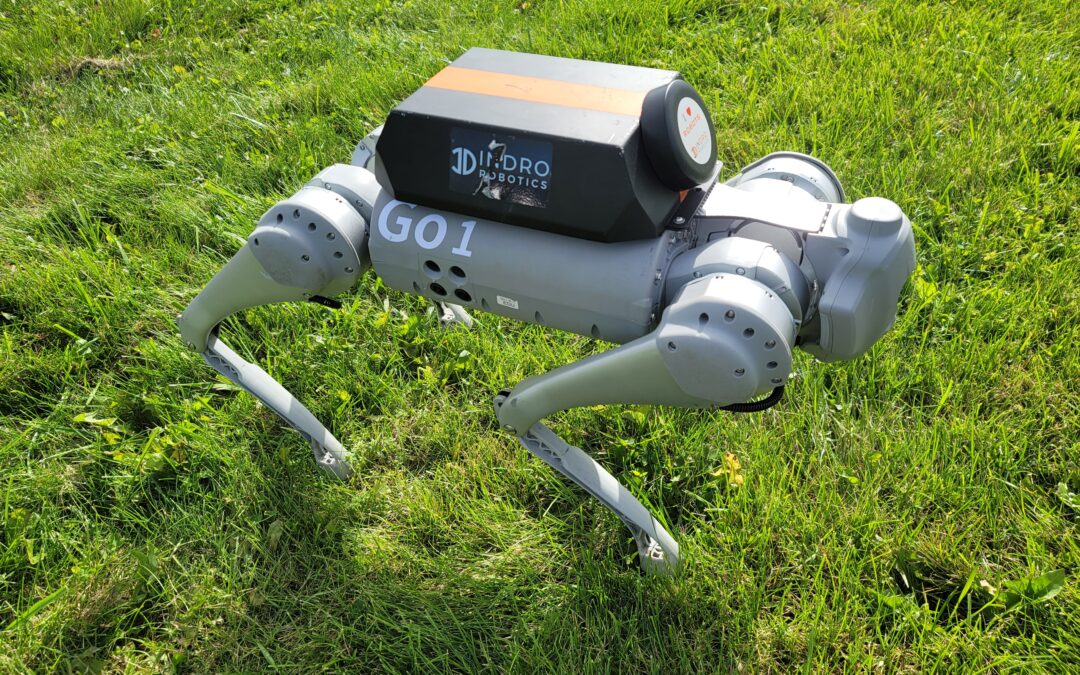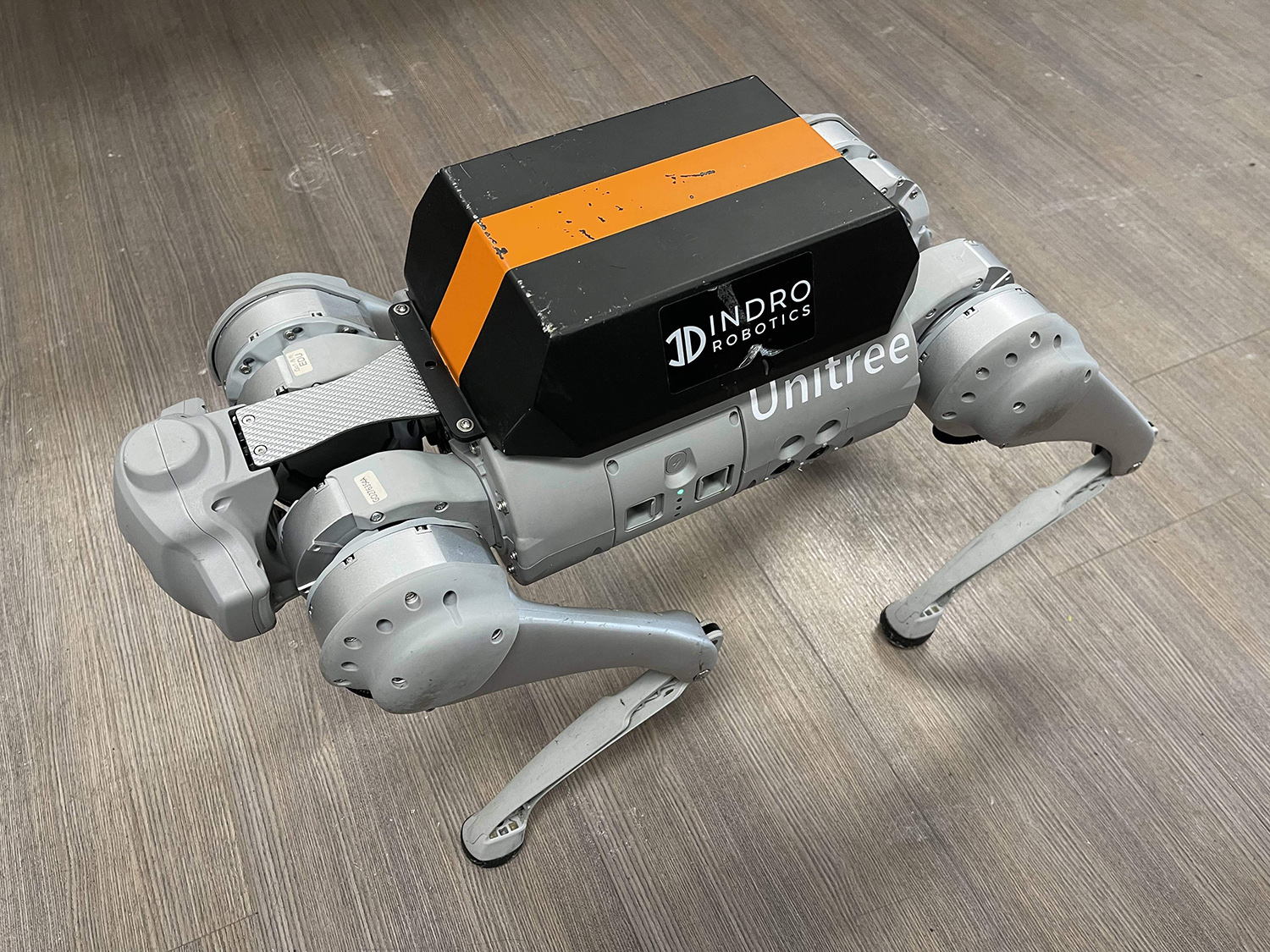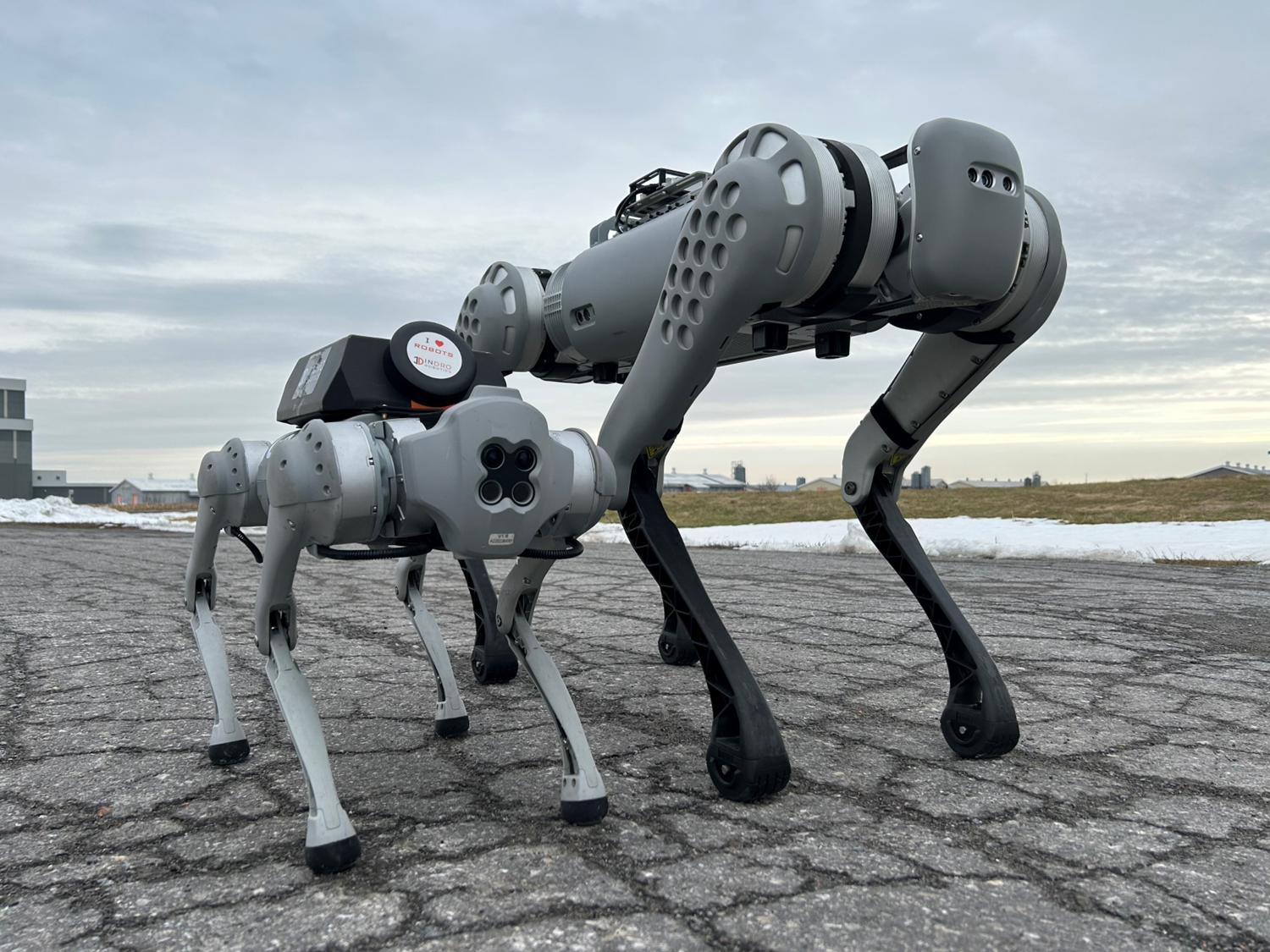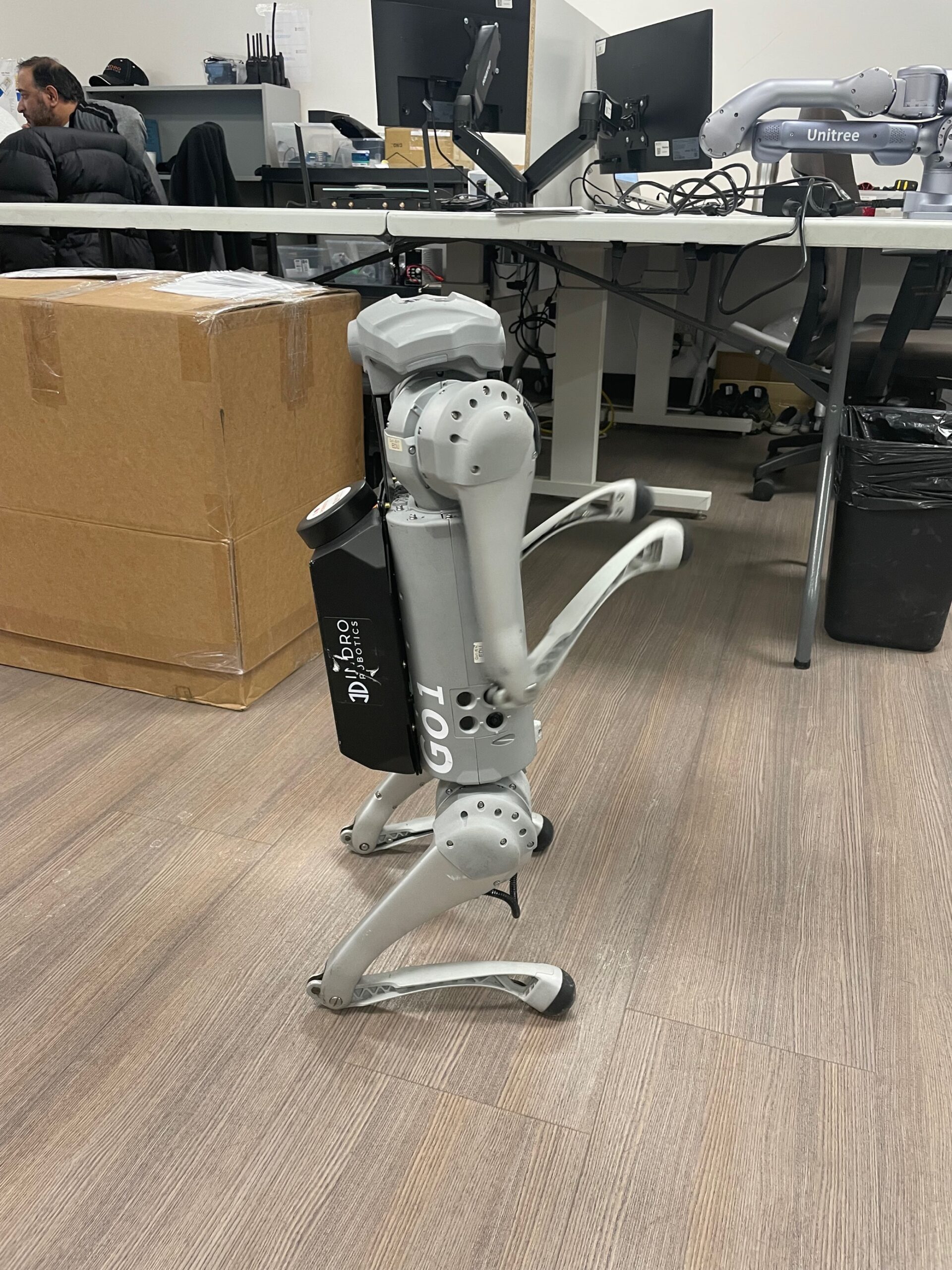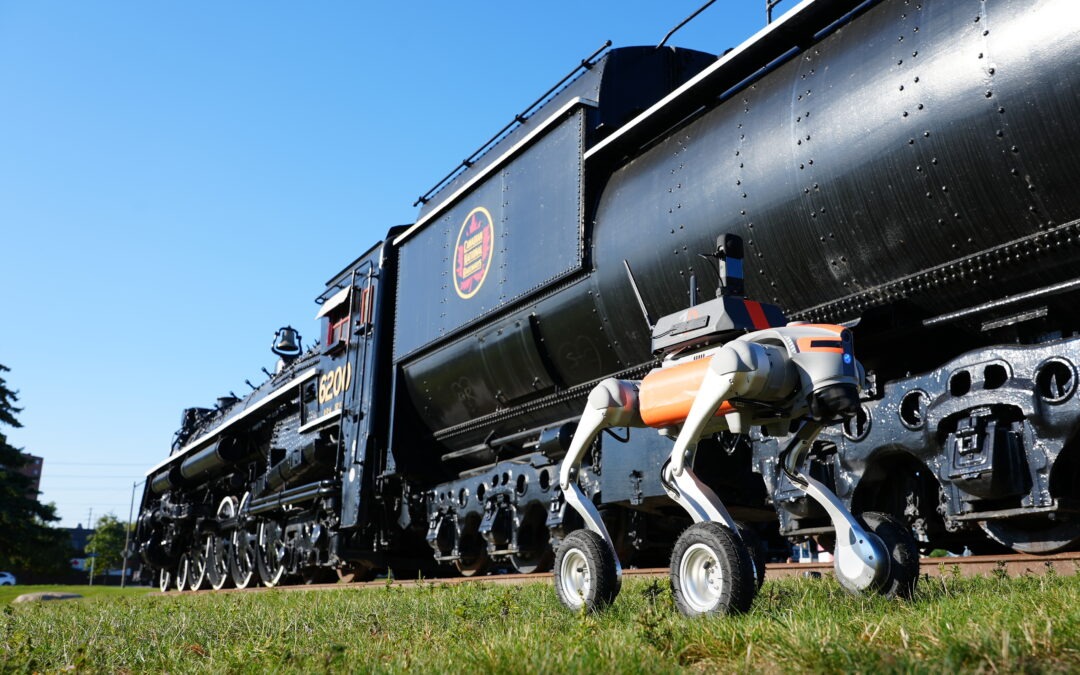
Wheeled quadrupeds: A versatile form factor
By Scott Simmie
So you need a robot.
Maybe it’s for inspection purposes, surveillance or monitoring. Maybe it’s for some other form of data acquisition. Perhaps it’s even for some highly specialised use-case, such as Search and Rescue.
There’s no shortage of options. And that’s both a blessing – and a challenge. How can you ensure you’re choosing the best option for the job?
On a recent edition of our Sound Byte micro-podcast, we spoke with InDro’s Head of R&D Sales, Luke Corbeth, about the advantages of different form factors. If you happened to miss that, you can have a listen in just a second.
But there was one thing Luke said during that conversation that really caught our attention. We realize your time is precious, so feel free to scrub ahead to 4:38 to hear the segment most relevant to this post (though, of course, listening to the entire short podcast will provide additional context about form factors):
Above: Locomotion has come a *long* way
STAIRS, DEMANDING TERRAINS
Wheeled quadrupeds are both a recent innovation and a unique and versatile form factor. They have the advantage of all quadrupeds, such as the ability to climb stairs and navigate other obstacles. First, let’s recap what Luke had to say about quadrupeds in general.
“The name of the game with robot dogs is stairs. If you need to do any multi-level inspection, it’s one of the only form factors that can reliably get up and down stairs,” he says.
In addition, quadrupeds excel at dynamic terrains. Think construction sites, places with debris that would halt a standard wheeled UGV, embankments, even a forest or trail. Quadrupeds have an impressive ability to scramble their way over obstacles. And, if they happen to fall down and flip over – can right themselves and keep on going.
But they also have limitations. Though some do clock impressive speeds, they’re not as fast as most wheeled platforms and lack the range. They’re also not as smooth, which can be an issue with sensitive payloads. And that’s where wheeled quadrupeds come in. They’re able to handle everything a standard quadruped can, but with several distinct advantages – including speed, stability and extended range. By using their wheels, they’re also able to overcome some obstacles (a low fence or barrier, for example) that would be a challenge for standard quadrupeds.
“They keep payloads much more stable while in movement, which is great for things like security applications or data capture, and they offer best-in-class climbing ability as well,” says Corbeth. “I’m constantly looking at which options suit our clients’ needs the best, and this one seems to be coming to the top of the list in almost every discussion these days.”
THE INDRO ADVANTAGE
Of course – if a wheeled quadruped looks like a fit for your use-case, there’s nothing to stop you from ordering one directly from a manufacturer. But out-of-the-box robots have limitations. InDro specialises in customising all robots specifically for customer needs.
By adding the InDro “Backpack” – we vastly enhance the capabilities of these robots for specific applications. The Backpack allows for the seamless integration of additional sensors (which we’re happy to do), enables remote teleoperation over 5G using InDro Controller, and can be pre-loaded with our InDro Autonomy software stack. You can execute and monitor all data on missions from right next door – or even from thousands of kilometres away.
“There’s a huge difference between a robot that comes direct from the factory and one that’s been modified by InDro,” explains Corbeth. “We can customise any configuration for clients, including – as we did recently – the addition of a robotic arm and manipulator. Using the InDro Controller platform not only enables repeatable custom missions, but also allows clients to control multiple different robots – even drones – with multiple sensors, using a single and highly intuitive interface.
“We’re trying to make them (robots and drones) easier to use, regardless of how they look or what data they collect,” says Corbeth.
Below: A Unitree GO2 W in a promotional video. InDro modifications vastly expand the capabilities of this – and other – robots and drones. The second image shows one of our options: The Prowler is customised for security and surveillance applications.
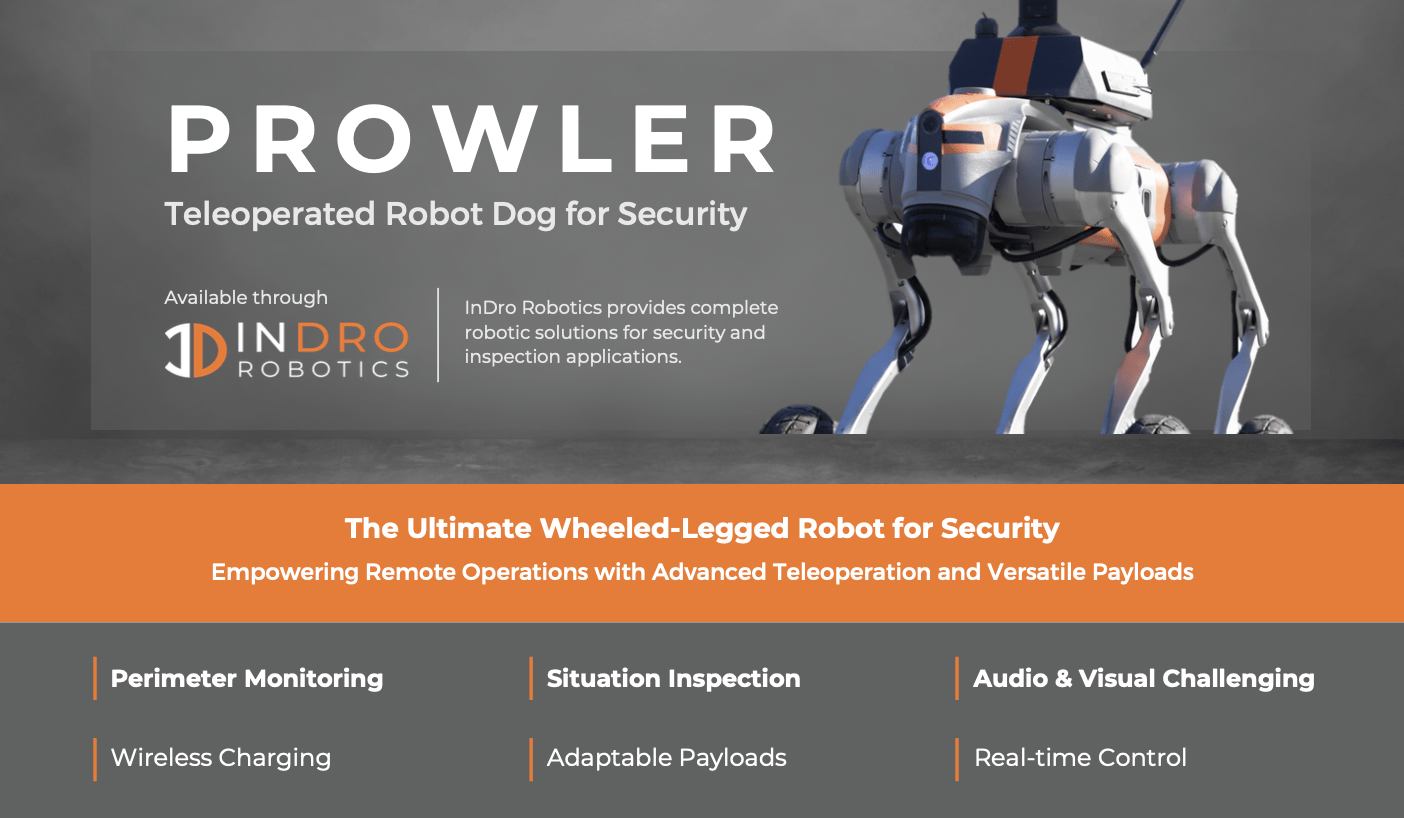
INDRO’S TAKE
We’ve seen a true revolution in off-the-shelf robots over the past few years. At the same time, InDro’s engineers have continuously pushed the envelope when it comes to compatible hardware and software packages. Such add-ons elevate these machines into fully customizable intelligent, autonomous devices that can carry out even highly complex missions repeatedly and reliably. The Prowler version (pictured above) is just one of our many options, depending on use-case (you can download the short deck here).
“For an increasing number of clients, our customised wheeled quadrupeds are the most capable and flexible solution,” says Corbeth. “They have pretty much unmatched agility and performance. We can add any sensor package – and modify them so that they recharge wirelessly post-mission with no human intervention. Even three years ago, it would have been hard to imagine the power of these InDro-enhanced robots, especially given their price point.”
Interested in learning more? Luke is always happy to talk robots, and you can contact him here.

